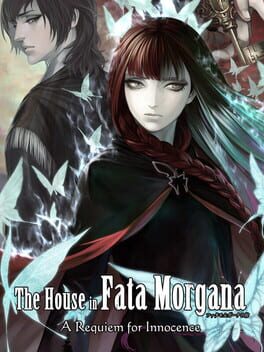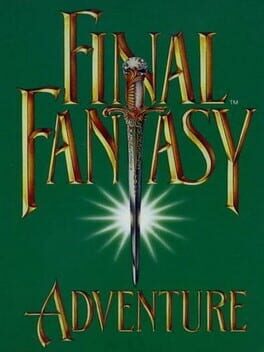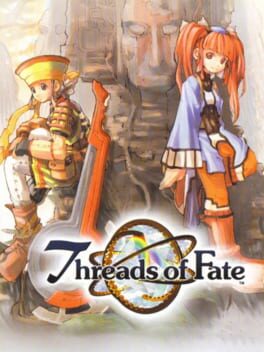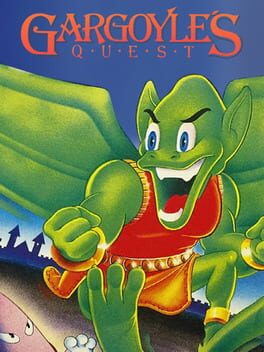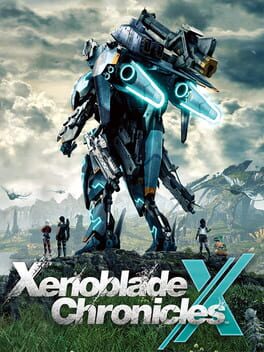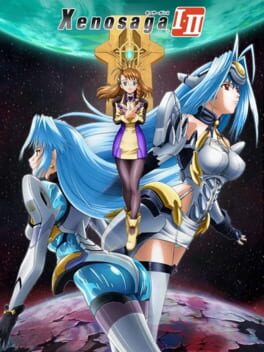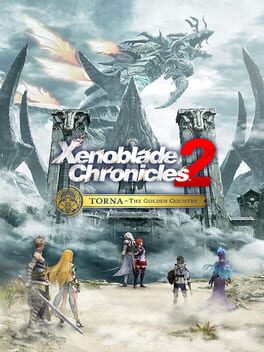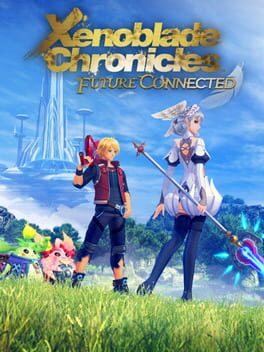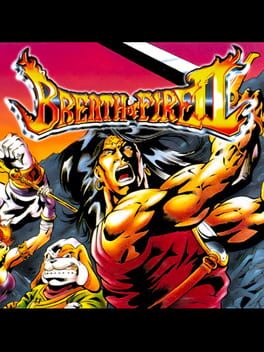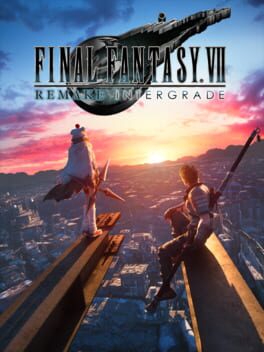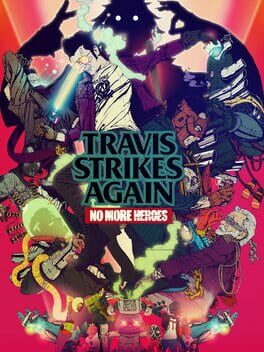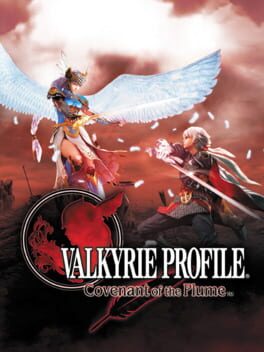rockman
This visual novel has 4 separate stories to it so i'll talk about each separately. This review has no direct spoilers but tread carefully if you have not completed the original Fata Morgana.
A Requiem for Innocence:
This is the longest story and the "main attraction" so to speak of this whole package. It's unfortunate that I have to say it's quite uninteresting and not very good. Now, this story is a prequel focused on 2 of the major players from the original story. To avoid spoilers I'm going to name them Elmer and Paula, you'll know who I'm talking about if you've read this or the original. Now as everyone knows you do get Paula's complete backstory in a adv mode segment during the original visual novel, A Requiem for Innocence is a retelling of that story to perhaps give us more insight on the things going on. If you're a fan of Elmer or Paula or maybe even both of them there's some value in reading this for sure. I'm of the opinion that Paula is not very interesting and her story was very simple so I saw little purpose to this going in. Elmer however is one of my favorite characters so I was curious what they would do with him here. Thankfully there is some good stuff on that front, not worth going through this whole mess, but that deeper insight on his character and motivations, humanizing him further was a welcome addition. Unfortunately all that substance is very muddled within a very poor retelling of Paula's backstory with loads of unnecessary additions and seeing things we already knew perfectly well of when it was told originally. You even get some of the antagonist's point of view here and it might be the most pointless, stupid and uninteresting addition to this whole franchise. If I have to say something is good here besides Elmer's characterization I will say that the artwork is as good as ever and the new tracks will not disappoint.
Assento Dele:
This is a short story about our beloved protagonist and an entirely new character detailing an account of when this new person stumbled upon the mansion and saw a friend in who they encountered there despite neither of them being sociable or telling each other the truth at any time. I do think it's a neat concept but it, like Requiem of Innocence, ends up not really adding much at all of substance and it doesn't really cover anything thematically that wasn't covered better in the main game.
Happily Ever ~After~:
Now this, this is great. This is a short story that further details the ending of the original story and for once we don't get excessive retreading and boredom, this is entirely new, fresh and features the best characters in the franchise. If you like Fata Morgana do yourself a favor and read this.
Fragment:
Fragment surprised me, it's an extra story with the aforementioned Elmer and Paula. There's extra closure to be had here for them and honestly, I loved it despite not really liking Paula it was a very touching read. The song that plays in this is absolutely fantastic.
A Requiem for Innocence:
This is the longest story and the "main attraction" so to speak of this whole package. It's unfortunate that I have to say it's quite uninteresting and not very good. Now, this story is a prequel focused on 2 of the major players from the original story. To avoid spoilers I'm going to name them Elmer and Paula, you'll know who I'm talking about if you've read this or the original. Now as everyone knows you do get Paula's complete backstory in a adv mode segment during the original visual novel, A Requiem for Innocence is a retelling of that story to perhaps give us more insight on the things going on. If you're a fan of Elmer or Paula or maybe even both of them there's some value in reading this for sure. I'm of the opinion that Paula is not very interesting and her story was very simple so I saw little purpose to this going in. Elmer however is one of my favorite characters so I was curious what they would do with him here. Thankfully there is some good stuff on that front, not worth going through this whole mess, but that deeper insight on his character and motivations, humanizing him further was a welcome addition. Unfortunately all that substance is very muddled within a very poor retelling of Paula's backstory with loads of unnecessary additions and seeing things we already knew perfectly well of when it was told originally. You even get some of the antagonist's point of view here and it might be the most pointless, stupid and uninteresting addition to this whole franchise. If I have to say something is good here besides Elmer's characterization I will say that the artwork is as good as ever and the new tracks will not disappoint.
Assento Dele:
This is a short story about our beloved protagonist and an entirely new character detailing an account of when this new person stumbled upon the mansion and saw a friend in who they encountered there despite neither of them being sociable or telling each other the truth at any time. I do think it's a neat concept but it, like Requiem of Innocence, ends up not really adding much at all of substance and it doesn't really cover anything thematically that wasn't covered better in the main game.
Happily Ever ~After~:
Now this, this is great. This is a short story that further details the ending of the original story and for once we don't get excessive retreading and boredom, this is entirely new, fresh and features the best characters in the franchise. If you like Fata Morgana do yourself a favor and read this.
Fragment:
Fragment surprised me, it's an extra story with the aforementioned Elmer and Paula. There's extra closure to be had here for them and honestly, I loved it despite not really liking Paula it was a very touching read. The song that plays in this is absolutely fantastic.
Highly underrated gem. The most impressive game boy game I've ever played with fun gameplay throughout, a very ambitious story and scope plus a solid soundtrack which all make for a great time. The game clocks in at around the 10 hour mark too which is pretty much the perfect length it could've had.
1993
I tried really hard to like this game but it's just a mess, the hit detection, the ally AI, the bosses, the clunky menus, the edge panning all make it insufferable to play. It does have a few merits though. The music and graphics are fantastic and I found the world to be decently interesting, it's also very hard to get lost in this game, which is surprising for when it came out.
1999
Very charming PS1 game with fantastic visuals, fun story, fun characters, amazing music and textbook solid gameplay to hold it all together. This game has two routes, one for each playable protagonist but you don't need to beat both to finish the game. It doesn't get too crazy mechanically but the game is very finely tuned for an experience that hits the sweet spot between braindead and ball-crushingly difficult, staying enjoyable throughout its length which is also just right.
It's an action RPG... and hitting things is satisfying, more than a lot of games can claim! The routes will differ somewhat mechanically, Rue hits things with his pizza cutter and can transform into enemies to use their abilities while Mint hits things with her rings and large arsenal of magic which can be mixed and matched to your liking. The story's tone also differs a bit, Rue's is more serious and Mint's is more comedic, but they share those aspects in some form and neither will disappoint! Play this game!
It's an action RPG... and hitting things is satisfying, more than a lot of games can claim! The routes will differ somewhat mechanically, Rue hits things with his pizza cutter and can transform into enemies to use their abilities while Mint hits things with her rings and large arsenal of magic which can be mixed and matched to your liking. The story's tone also differs a bit, Rue's is more serious and Mint's is more comedic, but they share those aspects in some form and neither will disappoint! Play this game!
1990
this games epic but it crushed my balls and im coming back to crush its balls later
edit: balls have been crushed, loved this game, surprisingly modern conventions for a gameboy game and great level design with interesting mechanics like splatting cake on the spikes to climb higher. fuck those drills in the rushifell level though
edit: balls have been crushed, loved this game, surprisingly modern conventions for a gameboy game and great level design with interesting mechanics like splatting cake on the spikes to climb higher. fuck those drills in the rushifell level though
I was loving this game until I decided to buckle down and actually finish the main quest, big mistake, the best way to enjoy this game is to ignore it as much as you can.
The exploration and sidequesting in this game is the best in the franchise and only gets better as the game goes on and you acquire the mechs and the flight module. I'd like to say the combat is the best as well but the balancing feels half-assed due to the sheer amount of options you have with all the systems. It's a big downgrade from the original xenoblade which distributed what the characters could do very nicely and nothing really felt overpowered or underpowered. On the flipside of that the battles flow faster here and the added mechanics like soul voices and overdrive make it a lot of fun and differentiate it from its predecessor. I also felt like the enemy placement wasn't given much thought, it's almost random at times. Skell combat is poorly implemented and basically useless if you build your characters right. The online aspects of this game also feel extremely shoehorned and ends up just being a way to get free stuff for doing nothing.
Now remember that main quest I mentioned? It's the most poorly structured I've seen in a game, it's nearly NES era JRPG tier. Nothing happens until the final chapter where you get about an hour of infodumping before and after the final bosses and even in between phases. To add insult to injury it ends on a cliffhanger, the one part of the story I actually thought was cool, the ending, is sequel bait without delivering even half of what this felt like it was building up to with its awesome concept. This game was juggling so many plot points at once, doing absolutely nothing with them, and then dropping all of them by the end.
Last but not least I wanted to talk about the characters:
The exploration and sidequesting in this game is the best in the franchise and only gets better as the game goes on and you acquire the mechs and the flight module. I'd like to say the combat is the best as well but the balancing feels half-assed due to the sheer amount of options you have with all the systems. It's a big downgrade from the original xenoblade which distributed what the characters could do very nicely and nothing really felt overpowered or underpowered. On the flipside of that the battles flow faster here and the added mechanics like soul voices and overdrive make it a lot of fun and differentiate it from its predecessor. I also felt like the enemy placement wasn't given much thought, it's almost random at times. Skell combat is poorly implemented and basically useless if you build your characters right. The online aspects of this game also feel extremely shoehorned and ends up just being a way to get free stuff for doing nothing.
Now remember that main quest I mentioned? It's the most poorly structured I've seen in a game, it's nearly NES era JRPG tier. Nothing happens until the final chapter where you get about an hour of infodumping before and after the final bosses and even in between phases. To add insult to injury it ends on a cliffhanger, the one part of the story I actually thought was cool, the ending, is sequel bait without delivering even half of what this felt like it was building up to with its awesome concept. This game was juggling so many plot points at once, doing absolutely nothing with them, and then dropping all of them by the end.
Last but not least I wanted to talk about the characters:
2006
An interesting take on the first two episodes of Xenosaga. I really don't prefer the story changes this makes but it's cool as an alternate version. Episode 1 is pretty similar but adds in elements from the anime series. Episode 2 is about half the same and the rest is pretty different. Both are generally just inferior but there are cool moments.
The combat is extremely similar to episode 1 with some elements from episode 2 sprinkled in and the entirely new formation mechanic. Episode 1 had a grid that wasn't really used much, here it plays a pretty important role in not getting hit, executing ranged deathblows and activating your formations.
By laying out your characters a certain way on the grid you'll activate a formation for as long as your characters stay in that position. This can activate effects like hp regen every turn, stat boosts or even remedy your boost gauge. The deathblows work a bit different here, you can execute a melee deathblow from anywhere on the grid and hit anywhere on the enemy grid, for ranged ones you must be directly in front of the enemy you're trying to hit, you'll only hit the first thing in your way. That said, most if not all ranged deathblows are aoe moves in some form, what aoe they cover varies.
Now for the things that trickled in from episode 2 you can execute duo moves by boosting with 2 characters at the same time. Other than that the ES combat is back and thankfully a slightly tweaked version of episode 2's ES combat pretty much fixed it entirely. It's essentially a simplified version of character combat, you can't do deathblows without charging up for a turn though, no upgrading them. You only get 1 deathblow on at a time which is determined by who is piloting the ES just like on PS2 but now you can very easily and reliably see how much damage each pilot combination will do.
Thoughts on the combat overall though... it's way too easy and exploitable but it is pretty fun anyway and both the character and ES battles are very well animated. For an early DS game it's pretty great. This game is also the only one where I didn't feel handicapped for using Shion. The gameplay is kept to a minimum for this game though, there's a lot less compared to the PS2 entries and way more dialogue.
The lack of full voice acting really makes this a hugely inferior version to experience the story besides me not liking the changes. While I praise the presentation as an early DS game it really can barely compare to the PS2 titles especially for a story that's this insane and grand scale. The music takes a huge hit too, Xenosaga 2 has my favorite Xenosaga soundtrack and Xenosaga 1 has a couple amazing tracks, here there's basically nothing even close to that quality but I didn't find it ear grating at the very least. There are some pretty good calm tracks.
Overall I can only really recommend this if you're a diehard fan of Xenosaga or Xeno in general. I enjoyed playing through this one but would never say it replaces the PS2 originals. Presentation and music go down the drain, combat is enjoyable, story is nothing more than a cool alternate scenario when it's modified.
The combat is extremely similar to episode 1 with some elements from episode 2 sprinkled in and the entirely new formation mechanic. Episode 1 had a grid that wasn't really used much, here it plays a pretty important role in not getting hit, executing ranged deathblows and activating your formations.
By laying out your characters a certain way on the grid you'll activate a formation for as long as your characters stay in that position. This can activate effects like hp regen every turn, stat boosts or even remedy your boost gauge. The deathblows work a bit different here, you can execute a melee deathblow from anywhere on the grid and hit anywhere on the enemy grid, for ranged ones you must be directly in front of the enemy you're trying to hit, you'll only hit the first thing in your way. That said, most if not all ranged deathblows are aoe moves in some form, what aoe they cover varies.
Now for the things that trickled in from episode 2 you can execute duo moves by boosting with 2 characters at the same time. Other than that the ES combat is back and thankfully a slightly tweaked version of episode 2's ES combat pretty much fixed it entirely. It's essentially a simplified version of character combat, you can't do deathblows without charging up for a turn though, no upgrading them. You only get 1 deathblow on at a time which is determined by who is piloting the ES just like on PS2 but now you can very easily and reliably see how much damage each pilot combination will do.
Thoughts on the combat overall though... it's way too easy and exploitable but it is pretty fun anyway and both the character and ES battles are very well animated. For an early DS game it's pretty great. This game is also the only one where I didn't feel handicapped for using Shion. The gameplay is kept to a minimum for this game though, there's a lot less compared to the PS2 entries and way more dialogue.
The lack of full voice acting really makes this a hugely inferior version to experience the story besides me not liking the changes. While I praise the presentation as an early DS game it really can barely compare to the PS2 titles especially for a story that's this insane and grand scale. The music takes a huge hit too, Xenosaga 2 has my favorite Xenosaga soundtrack and Xenosaga 1 has a couple amazing tracks, here there's basically nothing even close to that quality but I didn't find it ear grating at the very least. There are some pretty good calm tracks.
Overall I can only really recommend this if you're a diehard fan of Xenosaga or Xeno in general. I enjoyed playing through this one but would never say it replaces the PS2 originals. Presentation and music go down the drain, combat is enjoyable, story is nothing more than a cool alternate scenario when it's modified.
The most fun I've ever had with a JRPG, something I previously attributed to the original Xenoblade Chronicles. The sequel absolutely blows it out of the water gameplay and content wise. This game is packed with content (and it's all GOOD content) and the combat is the best in the franchise. I spent nearly 100 hours playing through the main story doing tons of sidequests and progressing my blade affinity charts. It's fun and rewarding to do sidequests while experimenting with different blade and character setups.
As far as writing goes I don't feel that it's the main selling point of the game, but it's something fans of the overall Xeno lore must experience. The pacing can get a bit awkward, some of the characters don't hit like they should but for any missteps there are a ton of positives to make up for them. The story is very ambitious and has a lot of great moments, the ending stretch is phenomenal. A lot of the stuff here feels out of the realm of possibility that the series established and a little more in tune with something like Xenosaga. Zeke and Jin are my favorite xenoblade character and antagonist, respectively. The party in general has a really cool dynamic in this game and they all have important roles to some degree.
Overall while your mileage may vary with the story and characters it's far from the worst ever in that regard. The gameplay is so good that I'm taken aback by how many people played a game this long, with combat that is apparently daunting for a lot of people, and still claim it's terrible with a straight face.
As far as writing goes I don't feel that it's the main selling point of the game, but it's something fans of the overall Xeno lore must experience. The pacing can get a bit awkward, some of the characters don't hit like they should but for any missteps there are a ton of positives to make up for them. The story is very ambitious and has a lot of great moments, the ending stretch is phenomenal. A lot of the stuff here feels out of the realm of possibility that the series established and a little more in tune with something like Xenosaga. Zeke and Jin are my favorite xenoblade character and antagonist, respectively. The party in general has a really cool dynamic in this game and they all have important roles to some degree.
Overall while your mileage may vary with the story and characters it's far from the worst ever in that regard. The gameplay is so good that I'm taken aback by how many people played a game this long, with combat that is apparently daunting for a lot of people, and still claim it's terrible with a straight face.
Very unnecessary story like everyone says, I'd go a step further and say it actually detracts from Melia's character arc by creating these circumstances in the world just so she can go through a very similar development that she previously did. The combat is dumbed down from the base game, it's fun but if you don't play Shulk it's hard to do well. The ponspectors are a super fun addition and the nopon party members aren't that bad. However, the only real reason to play this is for the xenosaga reference, and the fact that you can experience a fight with it using a team of Shulk and 14 furballs.
1994
A fantastic game that was ahead of its time with its characters and storytelling and would probably have been as acclaimed as the classics of the era like Chrono Trigger and Final Fantasy VI had it come out with a proper localization and the GBA balancing back in '95.
This game has a lot of issues which are pretty much all attributed to some of its more antiquated design choices. Once you get a decent ways in, random encounters are very frequent, characters take forever to level up and animations take too long. One of the cooler aspects of the game, the shaman system, is hurt severely by characters losing their shaman fusions when they hit critical health or die. Some cutscenes also remove shaman forms forcedly. Not being able to swap party members on the fly can be a bit cumbersome as well, but I understand why this feature was omitted when the original Breath of Fire included it. Inactive party members gaining no exp at all is also pretty not cool.
Now onto why this game is great. The intro sequence is a fantastic hook and if you stick around you'll see that the serious story parts will hold up to that quality and soar to even higher highs. That said a ton of this game is comedic and it really hits the mark. You're thrown into wacky situation after wacky situation for a large portion of this game and it never ceases to be entertaining. One moment you'll be chasing a fly that calls you retarded and soon after you'll be shrinking to microscopic sizes to kill an overweight queen's cellulite from the inside. It makes this colorful cast with awesome designs very likable and you'll have genuine attachment to them which makes the serious moments in this game that much better. The way this game connects to the original Breath of Fire is amazing as well. That game had its own (rather mediocre) complete story and II makes great use of that foundation it established to make its own world, characters and events even more interesting.
Now on the more game side of things, this game looks and sounds fantastic. Some of the songs got old and at times the battle theme or world map theme was replaced by one I liked less but the great songs are there and are very good in or out of context. No small amount either, the first battle theme, first two world map themes, boss theme, final boss themes, the great bird theme and many more.
Gameplay wise it is fairly standard at its core but there are enough deviations for it to feel different compared to other games of the era. All characters have a unique command to use in battle such as Ryu's Guts which heals him exponentially more the lower his current health is. Bosch can use Snipe for a chance to instantly kill any regular enemy, but if it fails it will deal 1 damage. You can lay out your characters in a few different formation types which will affect how much damage they can deal and take to suit your playstyle. Characters have their own spell learnsets by leveling up but the game also presents opportunities for you to learn spells early or choose to give someone a unique spell after completing a sidequest. Besides the traditional stats characters also have a Will stat which gives them a chance to survive a lethal hit at 1 HP and they shout a cool one liner when it happens. Characters also all have unique field skills and speaking to NPCs with a different character at the front of the party can yield different interactions. On the field Ryu can fish, Bosch can hunt animals for recovery items while other characters like Rand or Tapeta allow for different movement options like swimming through shallow water and going up ledges. Difficulty wise it is generally well balanced and a fun challenge, other parts can be a overly unforgiving but this is usually made fine by the game cutting your money in half when you die instead of booting you to the title screen. There are banks in most item shops to keep your cash safe.
This game also has a cool sort of community building mechanic where after leaving the starting town you create your own from the ground up and it slowly expands as the game progresses. Named NPCs found across the world can be recruited to live in your town. They can set up shops or provide unique services for you such as blacksmithing or cooking.
The most unique mechanic present in this game is the shaman fusion system. As you progress through the game you'll collect up to 6 shamans to fuse with your characters. On their own they usually just increase a single stat but proper combinations can give you extra bonuses that also give characters color palette swaps. A step further than that is each character's even more unique fusions where their design changes entirely, they become vastly more powerful and their unique battle command will change as well. Fusions are not limited, so provided you have the necessary shamans you can mix and match all you want and see what works best for you (or who looks coolest). Now this point can be a positive or a negative depending how you view it, certain characters will be required for you to use, especially once you hit the second half of the game. You'll need to speak with NPCs as certain characters to progress or be required to use a field skill to get where you need to go. I generally felt this was a nice opportunity to diversify the characters I was using and ended up using them all fairly equally until the finale where I decided on a set team. These portions are never without good reason either so it was hard for me to feel bothered. This would likely be no problem at all if the GBA version's money and exp balancing was present.
Overall Breath of Fire II is a really cool and memorable experience any JRPG fan should give a chance. There's a decent amount of archaic design and the game can be a little too unforgiving at times but after it was all said and done none of that could ever stop me from loving this game.
Note: I played this with the popular retranslation patch. Avoid the original SNES localization.
This game has a lot of issues which are pretty much all attributed to some of its more antiquated design choices. Once you get a decent ways in, random encounters are very frequent, characters take forever to level up and animations take too long. One of the cooler aspects of the game, the shaman system, is hurt severely by characters losing their shaman fusions when they hit critical health or die. Some cutscenes also remove shaman forms forcedly. Not being able to swap party members on the fly can be a bit cumbersome as well, but I understand why this feature was omitted when the original Breath of Fire included it. Inactive party members gaining no exp at all is also pretty not cool.
Now onto why this game is great. The intro sequence is a fantastic hook and if you stick around you'll see that the serious story parts will hold up to that quality and soar to even higher highs. That said a ton of this game is comedic and it really hits the mark. You're thrown into wacky situation after wacky situation for a large portion of this game and it never ceases to be entertaining. One moment you'll be chasing a fly that calls you retarded and soon after you'll be shrinking to microscopic sizes to kill an overweight queen's cellulite from the inside. It makes this colorful cast with awesome designs very likable and you'll have genuine attachment to them which makes the serious moments in this game that much better. The way this game connects to the original Breath of Fire is amazing as well. That game had its own (rather mediocre) complete story and II makes great use of that foundation it established to make its own world, characters and events even more interesting.
Now on the more game side of things, this game looks and sounds fantastic. Some of the songs got old and at times the battle theme or world map theme was replaced by one I liked less but the great songs are there and are very good in or out of context. No small amount either, the first battle theme, first two world map themes, boss theme, final boss themes, the great bird theme and many more.
Gameplay wise it is fairly standard at its core but there are enough deviations for it to feel different compared to other games of the era. All characters have a unique command to use in battle such as Ryu's Guts which heals him exponentially more the lower his current health is. Bosch can use Snipe for a chance to instantly kill any regular enemy, but if it fails it will deal 1 damage. You can lay out your characters in a few different formation types which will affect how much damage they can deal and take to suit your playstyle. Characters have their own spell learnsets by leveling up but the game also presents opportunities for you to learn spells early or choose to give someone a unique spell after completing a sidequest. Besides the traditional stats characters also have a Will stat which gives them a chance to survive a lethal hit at 1 HP and they shout a cool one liner when it happens. Characters also all have unique field skills and speaking to NPCs with a different character at the front of the party can yield different interactions. On the field Ryu can fish, Bosch can hunt animals for recovery items while other characters like Rand or Tapeta allow for different movement options like swimming through shallow water and going up ledges. Difficulty wise it is generally well balanced and a fun challenge, other parts can be a overly unforgiving but this is usually made fine by the game cutting your money in half when you die instead of booting you to the title screen. There are banks in most item shops to keep your cash safe.
This game also has a cool sort of community building mechanic where after leaving the starting town you create your own from the ground up and it slowly expands as the game progresses. Named NPCs found across the world can be recruited to live in your town. They can set up shops or provide unique services for you such as blacksmithing or cooking.
The most unique mechanic present in this game is the shaman fusion system. As you progress through the game you'll collect up to 6 shamans to fuse with your characters. On their own they usually just increase a single stat but proper combinations can give you extra bonuses that also give characters color palette swaps. A step further than that is each character's even more unique fusions where their design changes entirely, they become vastly more powerful and their unique battle command will change as well. Fusions are not limited, so provided you have the necessary shamans you can mix and match all you want and see what works best for you (or who looks coolest). Now this point can be a positive or a negative depending how you view it, certain characters will be required for you to use, especially once you hit the second half of the game. You'll need to speak with NPCs as certain characters to progress or be required to use a field skill to get where you need to go. I generally felt this was a nice opportunity to diversify the characters I was using and ended up using them all fairly equally until the finale where I decided on a set team. These portions are never without good reason either so it was hard for me to feel bothered. This would likely be no problem at all if the GBA version's money and exp balancing was present.
Overall Breath of Fire II is a really cool and memorable experience any JRPG fan should give a chance. There's a decent amount of archaic design and the game can be a little too unforgiving at times but after it was all said and done none of that could ever stop me from loving this game.
Note: I played this with the popular retranslation patch. Avoid the original SNES localization.
A pretty great game bogged down by the platform it's on and a nonexistent budget.
I fully enjoyed playing and completing route C of this game, which was my first choice. Though to really beat the game you must complete all 3 endings, A, B and C. The story plays out differently in each route, at times giving you further insight on events seen in other routes or ones that occurred before the beginning of the game. You also recruit entirely different characters to your party. So why are these replays what brings down the game for me?
When replaying the game you maintain all of your equipment and consumables plus Wylfred maintains the skills you gain from sacrificing allies. You'll also notice that nearly every map is straight up reused but with a tweaked starting position and/or enemy types. It's not remotely challenging and it feels very tedious but I didn't want to leave the game unfinished and was interested in seeing the true ending.
For me this was worthwhile, I loved seeing Wylfred's story unfold. He's definitely one of the most fleshed out and interesting characters in the series. That said I don't find the political story going on as a backdrop too interesting, it's cool to see and understand why events happen through the different route perspectives but this ultimately was already seen and done better with the einherjar stories in previous titles.
As for the actual gameplay, it's fun and a smart way to make Valkyrie Profile into an SRPG. Though due to the nature of the routes discussed above it's not much fun after your first route, besides the seraphic gate. The original combo system is maintained and now combined with grid movements and formations that'll determine how you want to approach and how you want to attack.
Enemies still drop exp crystals when you juggle them but now the purple orbs drop from hitting stunned enemies, which you can achieve by hitting them from behind or sometimes the sides. The orbs in this game directly add to how many attacks the character who earned them can do in their current string. Personally I didn't abuse this much and chose to stick to surrounding enemies and abusing the siege bonuses you get from doing so successfully. Soul crush/PWS is back in this game too, but like in VP2 you need weapons that have it enabled to use them.
A totally new mechanic added in this game is the destiny plume, in which you may sacrifice a party member permanently in return for making them extremely strong and unkillable for the rest of the current battle. This will also net a new ability for Wylfred and each playable character you can sacrifice has a unique one to gain. How many times you use the plume will also affect your route. The other new mechanic is the sin gauge. Every battle has a sin requirement, you gain sin by overkilling enemies and how much you get is determined by how much damage you overkilled them by. If you can net double the sin requirement in a battle you will get fantastic rewards, basically serving as the equivalent to fulfilling Freya's einherjar requests in VP1. Failing to meet the requirement will net you a harsh punishment in the next battle.
Last but not least the seraphic gate is back for the post game once again. It's great in this game, funny dialogue as always and I found it refreshing that you're forced to start with no items, equipment or skills. You go through the entire mode (around 20 battles) starting fresh but you can pick anyone from the three routes and you'll recruit exclusive characters as you progress as well. There's no sin requirement or rewards so you need to make do with hidden items, the limited money you earn and what enemies drop to make it to the end.
Overall I enjoyed my time with this game as the gameplay is well designed and fun. The game not having much of a budget is certainly to blame for the "different" routes being mostly reused content gameplay wise. More map variety or more clever map design would go a long way in fixing this. That said Wylfred's story is definitely a highlight within the series and it was worth some tediousness to see its best moments.
I fully enjoyed playing and completing route C of this game, which was my first choice. Though to really beat the game you must complete all 3 endings, A, B and C. The story plays out differently in each route, at times giving you further insight on events seen in other routes or ones that occurred before the beginning of the game. You also recruit entirely different characters to your party. So why are these replays what brings down the game for me?
When replaying the game you maintain all of your equipment and consumables plus Wylfred maintains the skills you gain from sacrificing allies. You'll also notice that nearly every map is straight up reused but with a tweaked starting position and/or enemy types. It's not remotely challenging and it feels very tedious but I didn't want to leave the game unfinished and was interested in seeing the true ending.
For me this was worthwhile, I loved seeing Wylfred's story unfold. He's definitely one of the most fleshed out and interesting characters in the series. That said I don't find the political story going on as a backdrop too interesting, it's cool to see and understand why events happen through the different route perspectives but this ultimately was already seen and done better with the einherjar stories in previous titles.
As for the actual gameplay, it's fun and a smart way to make Valkyrie Profile into an SRPG. Though due to the nature of the routes discussed above it's not much fun after your first route, besides the seraphic gate. The original combo system is maintained and now combined with grid movements and formations that'll determine how you want to approach and how you want to attack.
Enemies still drop exp crystals when you juggle them but now the purple orbs drop from hitting stunned enemies, which you can achieve by hitting them from behind or sometimes the sides. The orbs in this game directly add to how many attacks the character who earned them can do in their current string. Personally I didn't abuse this much and chose to stick to surrounding enemies and abusing the siege bonuses you get from doing so successfully. Soul crush/PWS is back in this game too, but like in VP2 you need weapons that have it enabled to use them.
A totally new mechanic added in this game is the destiny plume, in which you may sacrifice a party member permanently in return for making them extremely strong and unkillable for the rest of the current battle. This will also net a new ability for Wylfred and each playable character you can sacrifice has a unique one to gain. How many times you use the plume will also affect your route. The other new mechanic is the sin gauge. Every battle has a sin requirement, you gain sin by overkilling enemies and how much you get is determined by how much damage you overkilled them by. If you can net double the sin requirement in a battle you will get fantastic rewards, basically serving as the equivalent to fulfilling Freya's einherjar requests in VP1. Failing to meet the requirement will net you a harsh punishment in the next battle.
Last but not least the seraphic gate is back for the post game once again. It's great in this game, funny dialogue as always and I found it refreshing that you're forced to start with no items, equipment or skills. You go through the entire mode (around 20 battles) starting fresh but you can pick anyone from the three routes and you'll recruit exclusive characters as you progress as well. There's no sin requirement or rewards so you need to make do with hidden items, the limited money you earn and what enemies drop to make it to the end.
Overall I enjoyed my time with this game as the gameplay is well designed and fun. The game not having much of a budget is certainly to blame for the "different" routes being mostly reused content gameplay wise. More map variety or more clever map design would go a long way in fixing this. That said Wylfred's story is definitely a highlight within the series and it was worth some tediousness to see its best moments.

